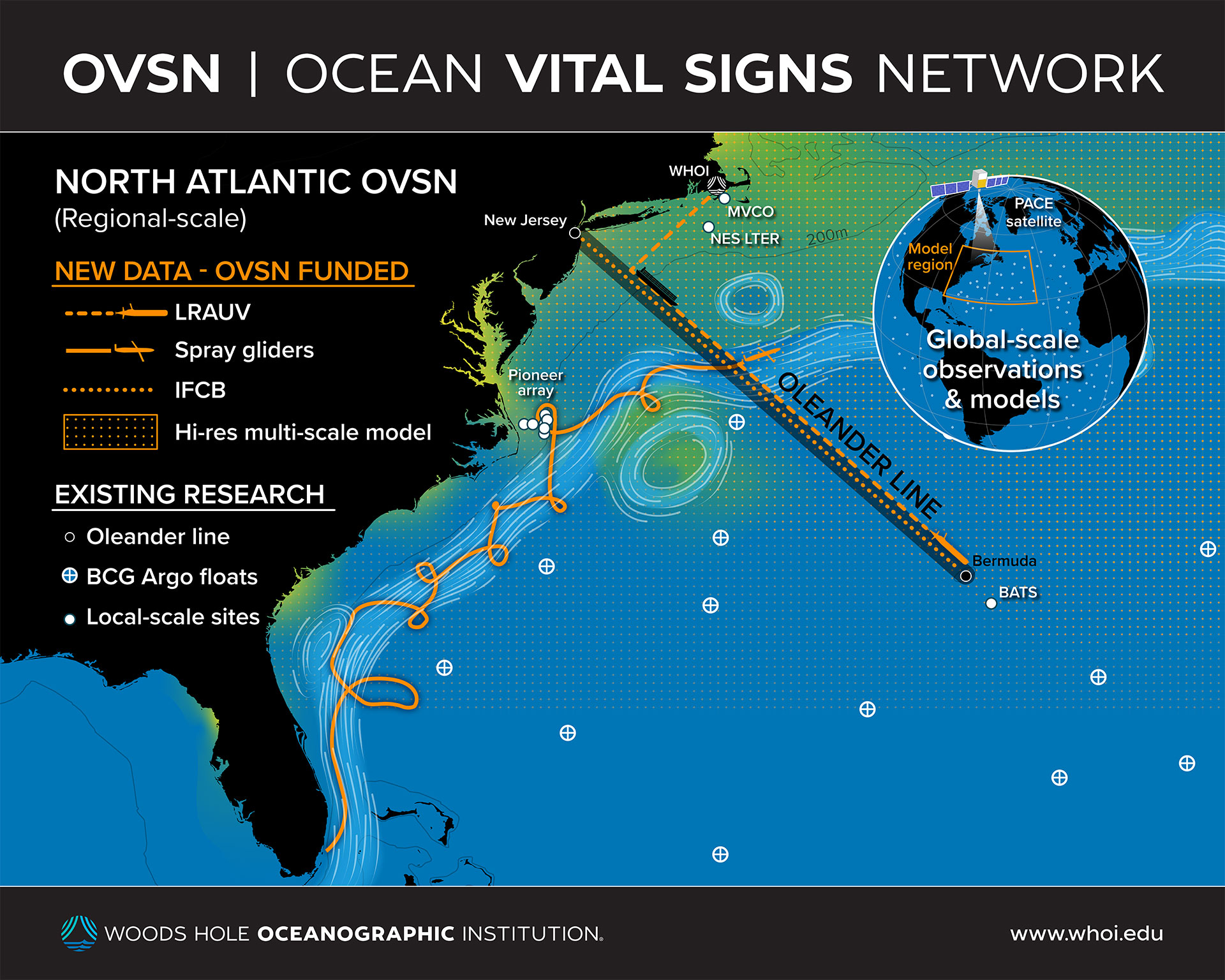Advancing knowledge and infrastructure to track ocean carbon across scales
From the air we breathe, to the food we eat, to the climate we experience, the oceans are essential to human life and the habitability of our planet. Continued human-produced emissions are an existential threat to the future of our species. In addition to impacts from nutrient runoff, pollution, overfishing, ship traffic, and more, the oceans are acutely feeling the effects of climate change. The oceans serve as the major sink for excess heat and have taken up roughly 30% of all anthropogenic carbon dioxide emissions to date. As a consequence, the oceans are experiencing warmer temperatures, increased stratification, and acidification. In combination with other human stressors, climate change will continue to profoundly alter ocean ecosystems and the roles they play in the ocean carbon cycle and climate regulation.
OVSN will enable high-resolution monitoring and forecasting at the regional scale, nested within a global backbone of ocean observations and models. OVSN will also enable the testing and development of next-generation technologies for monitoring carbon and ecosystems. An ethos of open and well documented real-time data streams will push the boundaries for how we manage, analyze, and distribute data.
OVSN Goals
- Track and quantify carbon flows through the ocean as they are influenced by physical and biogeochemical processes from the air-sea interface until and including ultimate burial, or re-ventilation to the atmosphere
- Quantify the impact of natural and intentional carbon cycle perturbations, including both direct effects on carbon flux as well as indirect feedbacks
- Evaluate interactions between ocean carbon cycling and ecosystem functioning across trophic levels, and quantify relationships to ‘ocean health’
The vision for OVSN is ambitious. In many aspects, realizing OVSN will require tackling a range of challenges that are at the forefront of oceanographic research and technology development. Meeting each of these challenges will be a significant accomplishment in its own right. Capabilities gained along the way have the potential to broadly enable future oceanographic research.
Our Commitment at WHOI
Independent and transparent research and observation
Our vision for OVSN is rooted in the principles of rigorous scientific analysis, transparency, and independent assessment. OVSN will seek to understand both climate-driven changes to the ocean carbon pumps as well CDR. In this capacity, the role of OVSN is not to advocate for any particular CDR approach, but instead to rapidly advance the science we need to understand the efficacy and impacts of different approaches.
We will operate OVSN with transparency and scientific independence at every level, including disclosing funding sources, openly distributing data, and engaging with the public and with private and governmental stakeholders throughout the system’s development and deployment.
